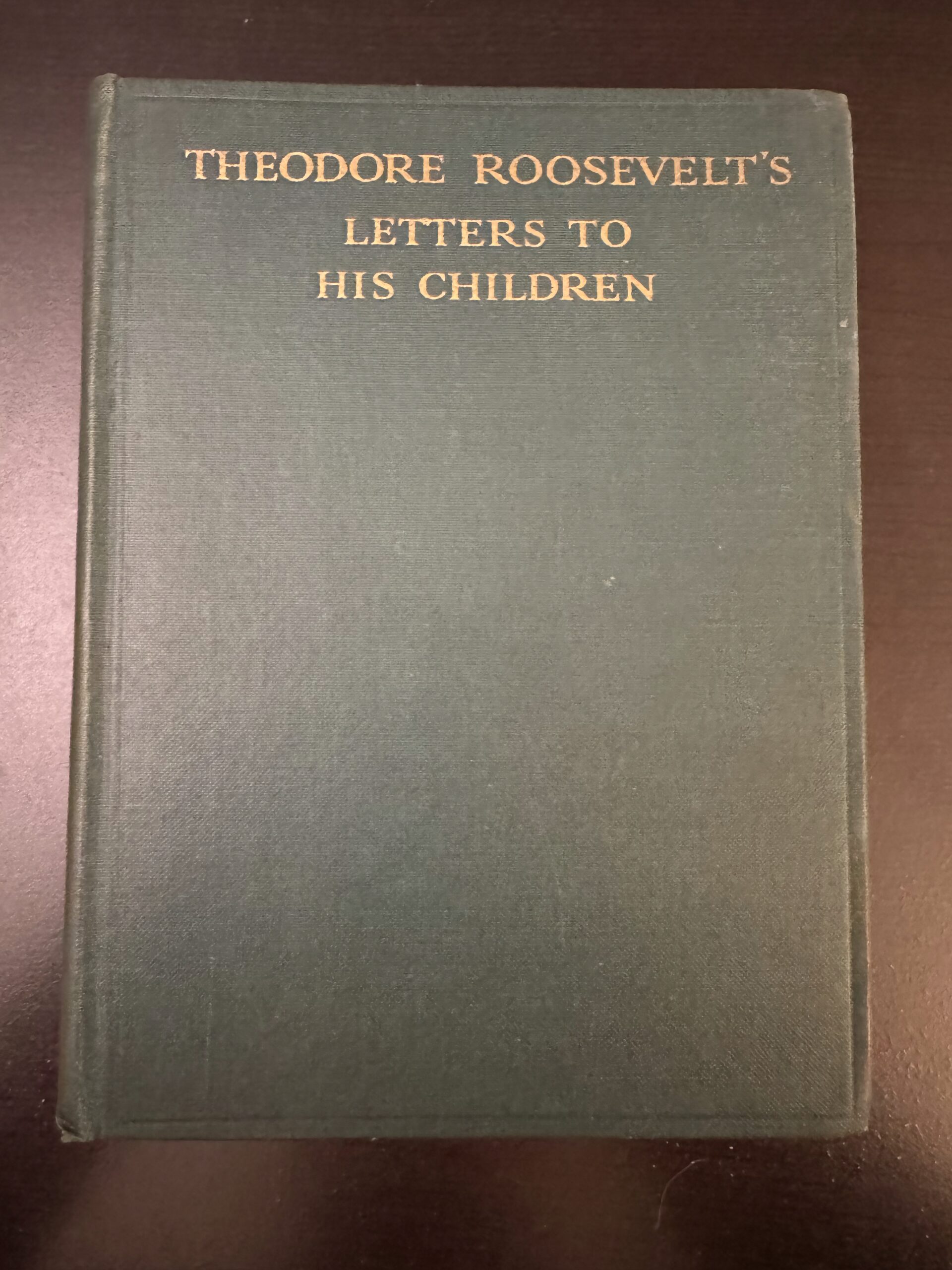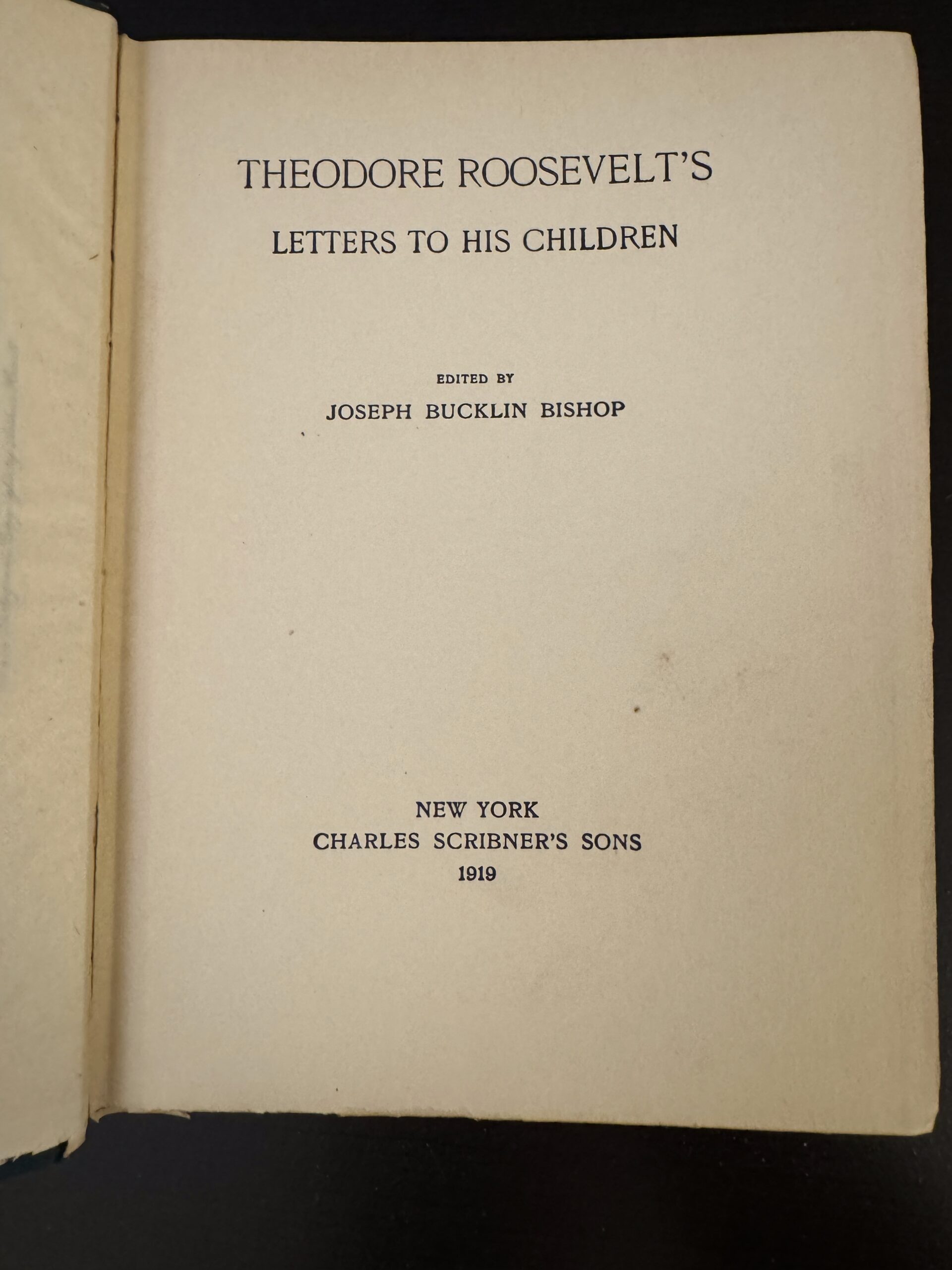Title: Theodore Roosevelt’s Letter to His Children
Author: Joseph Bucklin Bishop
Publisher: Charles Scribner’s Sons
Estimated year of printing: 1919
Notes:
Inscription: “A. R. Smith, Jr.; Be ever sweet (?); Waltham”
Theodore Roosevelt (1858 – 1919) became President of the United States from 1901 – 1909, after William McKinley was assassinated. Roosevelt was just 42 years old at the time, and is the youngest person to become President. He had six children art the time that he became President, ranging in age from four to 17. He aspired to be a good father while President, and wrote weekly letters to his children. This book is compilation of those letters. Due to the age range of his children, there is also considerable range in the style of letters here — topics including the naming of pets, events of the Spanish-American War, and advice on how to be successful. Some letters include drawings by Roosevelt.
The editor, Joseph Bucklin Bishop (1847 – 1928), was a newspaper writer who had a relationship with Roosevelt dating back to 1895 when Roosevelt was the President of the New York City Police Commission. Interestingly, Bishop’s great grandmother was Bridget Bishop, the first woman executed during the Salem Witch Trials in 1692.
Bishop proposed the idea of this book to Roosevelt in 1918 when Roosevelt was hospitalized, shortly before his death. Roosevelt was enthusiastic about the idea and considered it the most important book that could be written about him. Roosevelt died in January 1919, shortly before the book was published in that September. It became an instant best seller, and allowed Bishop to be economically self-sufficient the rest of his life. Bishop also went on to write Roosevelt’s biography, publish in 1920.
Historical context:
When this book was printed in 1919, Woodrow Wilson was President of the United States. The Treaty of Versailles was enacted this year, the most important peace treaty ending World War I. The 18th Amendment was passed this year, establishing Prohibition, which would last until 1933.


